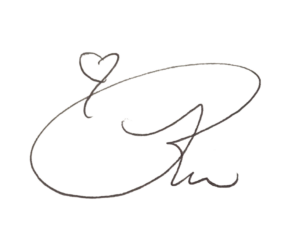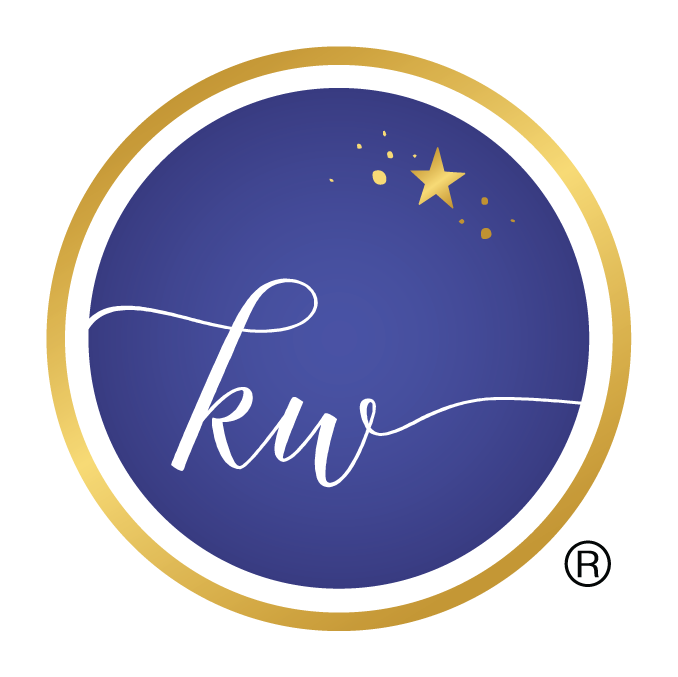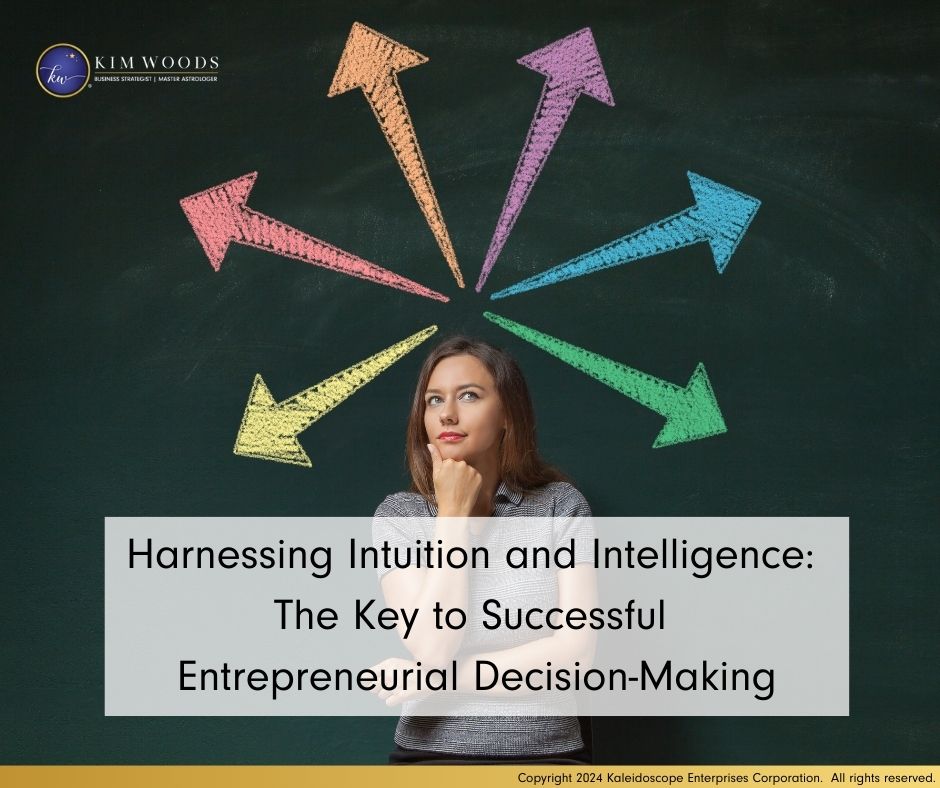- Introduction
In this fast-paced and high-stress world of entrepreneurship, making solid decisions is paramount to your success. By understanding decision levels and identifying your intuitive approach, you can navigate the complexities of decision-making with confidence and clarity. Fostering a balanced approach to decision-making, you can harness the power of intuition and intelligence to drive impactful and sustainable business growth.
Studies have shown you make 35,000 decisions every day.*
That number is overwhelming to contemplate, never mind to actually process. You’re in a constant state of decision – never getting relief from making them. In most cases, you have too many decisions to make without enough time or information to make them.
As a business owner, making decisions without all of the information is a constant pressure and one you have to deal with on a daily basis. In fact, you’re pressed to make multiple decisions at any given moment.
To add to this complexity, stressors escalate when you’re in transformative or growth mode AND when dealing with unfamiliar territory.
In growing your business, you’re always in growth or transformation mode AND you’re regularly dealing with things you do NOT know. Everything is…
growth.
unfamiliar.
a decision.
Ay caramba! Talk about stress!
As an entrepreneur, you’re constantly looking to save time, money and energy, so making good decisions is imperative. In fact, making valid decisions is #5 out of the top 10 problems facing entrepreneurs today.
So, decisions, decisions, decisions.
Click here to read my INC article on using your intuition in decision-making.
Your mind is bombarded with decisions every minute of every day. However, most decisions don’t require more than the typical process of identifying, gathering, assessing, choosing and acting. The process is so smooth and fast, it almost bypasses conscious thought.
Your mind can effectively process the mundane, daily and task-oriented decisions.
Yet, when decisions reach a certain level, you must rely on more than your mind to make solid decisions and stick with them.
Let’s look at the decision levels in their typical and atypical process and then dive into using your intuition for decision-making. It’s one of your most effective business tools, so let’s not leave it out of your toolbox.
Typical Decisions for Business
For the past 25 years, I’ve supported business leaders and in the boardroom, I developed the 3 corridors of leadership with the first one being decision-making. When you assess the level of the decision, you can set up your best decision-making criteria.
With the levels of decisions, strategic, operational and task also known as daily, let’s set up a framework for making the decisions you need to make for your business.
Strategic (Leadership)
Definition: Major decisions that are high-level, multi-year and impactful across multiple areas. These are broad sweeping and big picture; $10k+
This level of decision is at the leadership level. You’re required to act as a leader, keeping in mind the mission, vision and values of your business. The purview is beyond your current state – future-oriented with an outside scope. You’ll have to create a communication and buy-in process and construct a method to implement these decisions into your company or industry.
Examples: Business strategic plan, name, mission, vision, values, philosophy and approach, business culture, pricing strategy and offering mix, brand messaging and voice, organizational structure, profit strategy, strategic partners
Best criteria: Determine how each strategic decision affects you and your business. Are you making this particular decision to increase your revenues, thereby seeking opportunity and extending yourself or your business? Are you making this particular decision to improve your bottom line, therefore solidifying the foundation; anchoring you or your business at the core?
Operational (Management)
Definition: Operational decisions involve milestones, goals, targets, objectives and systems; planning, structure; decisions that affect over months, not years; $5k – 10k
This level of decision is at the management level. You’re required to act as a manager, focusing on your resources and results. The purview is within your organization with an internal benefit.
Examples: Client roster, marketing and sales strategy, launch and promotional plans, organizational positions and roles, networking plans and groups, systems platforms, staffing – hiring, promoting, firing; CRM parameters, pipeline management, communication style, optimize, streamline and assess growth options
Best criteria: Identify how each decision supports you, your team, structure or business methods. The focus is not only on the people, but the work itself. These decisions are…
refining, optimizing, fortifying with the common denominator being supportive.
confined to the current or past state of being with the intention of making things better.
improvement based.
Ask yourself how will the decision make things easier, faster, smoother?
Task (Individual contribution)
Definition: Minor decisions, routine and short-term; involve weekly or daily issues. These decisions have little or short-lived impact. With others, these decisions involve tiny offers, promotions, short-term connections, affiliate partners.
Examples: Administrative responsibilities, to-do’s, product fulfillment, client delivery, delegation, calendar, calls, emails, follow-up communication, execute CRM, social media posting; up to $5k
Best criteria: These decisions shouldn’t involve more effort, angst or time than their respective impact. Little impact of the decision and the effort to weight that decision should be relatively equal. Imagine spending hours, lots of money and a great deal of creativity on individual social media posts. Would the benefit outweigh the effort? That depends if said social media posts were part of an overall marketing and sales strategy. Thereby making these individual social media posts part of a operational or strategic decision.
Intuition Decision-making for Business
When a decision requires it, your mind should be put into the back seat and your intuition should be adopted to assist in the decision-making process. Particularly for the initial start-up process for a new business, division or service-line or for a pivot or sweeping changes in your business model.
This requires a complete interruption to the normal or typical decision-making process. Think about VIP days, off-sites, retreats, work-based conferences or workshops. You put time aside outside of your normal element to allow your mind to expand. At times, you may also involve alignment with your mind, heart and will to tap into your intuition.
Decide whether you’d like to incorporate this type of time and space creation to make operational decisions.
My advice is to do this when you’re in a particularly intense transformative or growth mode or when under undue stress.
Relying on your intuition requires you building your intuitive muscle. If you don’t, you may make rash or worse, ineffective decisions. Developing your intuition is necessary to leverage as a business tool.
Read about developing your intuition to become rich and powerful in my article on C-suite network.
One of the first steps in using your intuition is understanding your intuitive approach. The different intuitive approaches either initiate through your mind, heart or your will. You can refer to each one to determine your intuitive approach.
Analyzer
Your mind loves to analyze, so your best bet is to combine your thoughts with your intuitive nudges. You ease your mental faculty by giving it what is wants. Put easy work in front of you that requires light analysis and then let it wander. Analyze without any intent to derive answers. Take a few deep breaths and then ask, “how is my intuition talking to me?”
To stay present, continue with your breath and pay attention how your intuition speaks to you. If you feel connected, ask about a minor decision and see what presents itself.
When you’re practiced, you can increase the impact of the decision and ask your intuition about each one. Remember to separate decisions. This isn’t a one-to-many exercise.
Knower
You’re guided by internal compass without any input that sees, hears or feels. This knowing is the easiest to use once you’ve connected to it, but the most difficult to believe. Find a way that aligns your mind, heart and will.
Once you’re aligned or centered, let yourself fall into relaxation and then ask questions without any intent to receive answers. Take a few deep breaths and then ask, “what does my intuition want me to know?”
To stay present, continue with your breath and pay attention. If you feel connected, ask about a minor decision and see what presents itself.
When you’re practiced, you can increase the impact of the decision and ask your intuition about each one. Remember to separate decisions. This isn’t a one-to-many exercise.
Observer
Observe what interests you without any intent. You can soften your gaze and let yourself become balanced and centered. Take a few deep breaths and then ask, “how are my observations talking to me? What captures my attention?”
To stay present, continue with your breath and pay attention how your observations speak to you. If you feel connected, ask about a minor decision and see what presents itself.
When you’re practiced, you can increase the impact of the decision and ask your intuition about each one. Remember to separate decisions. This isn’t a one-to-many exercise.
Instinctive
Your intuition works immediately and you take action on your first and initial hit only. Let’s extend this as your instinct is a doorway into your intuition.
Your initial impression is great for yes and no answers, but doesn’t continue into the nuances of the way your intuition likes to connect with you.
After your initial ‘’hit’ and take a few deep breaths and then ask, “how is my intuition talking to me?”
To stay present, continue with your breath and pay attention how your intuition speaks to you. If you feel connected, ask about a minor decision and see what presents itself.
When you’re practiced, you can increase the impact of the decision and ask your intuition about each one. Remember to separate decisions. This isn’t a one-to-many exercise.
As you’re reading, if you’re questioning which intuitive approach is yours, click here to take my Do You Know, Like and trust Yourself® 12-question quiz and whitelist my email address to get all of your tips and business tools to use your intuition in business.
Empathizer
When you’re alone, you can access your intuition when you drop into something that interests you. This usually requires active movement or indulging your senses. You can write, draw, play music, walk or follow others’ emotional responses. Additionally, you can also connect with others’ emotions.
When making decisions that won’t affect anyone but yourself, fall into activity that engages your mind as described above.
When making decisions that require others, get connected to a few of those people who’ll be impacted by the decision. Be careful to stay in your own energy in order to prevent being overcome by others’ desires.
Either way, take a few deep breaths and then ask, “how does my intuition want to talk to me?”
To stay present, continue with your breath and pay attention how your intuition speaks to you. If you feel connected, ask about a minor decision and see what presents itself.
When you’re practiced, you can increase the impact of the decision and ask your intuition about each one. Remember to separate decisions. This isn’t a one-to-many exercise.
Perceiver
Perceivers push their intuitive responses into the world, so require others to be present in order to read their energy. This isn’t always the best way to approach your intuition when making decisions, unless those individuals are impacted by that decision.
When alone, you can push your energy into the world around you – perhaps out in nature or someplace you’ve meditated or connected often. The energy available to you will be potent with intuitive whispers.
When you’ve collected yourself, take a few deep breaths and ask, “how is my intuition talking to me right now?”
To stay present, continue with your breath and pay attention how your intuition is speaking to you in this moment. If you feel connected, ask about a minor decision and see what presents itself.
When you’re practiced, you can increase the impact of the decision and ask your intuition about each one. Remember to separate decisions. This isn’t a one-to-many exercise.
For more information about using your intuition in decision-making, listen to my podcast episode to combine your intuition with your intelligence, which holds even more ways to make more effective decisions.
Bottom Line
You’re required to make an inordinate number of decisions every day as a business owner of a growing business. Using your intuition for operational and strategic decisions helps you make solid ones that increase your top and bottom lines.
* according to Sahakian & Labuzetta, 2013.

#business decision-making #intuitive insights #entrepreneurial intuition
© Copyright 2024 Kaleidoscope Enterprises Corporation. All rights reserved.

